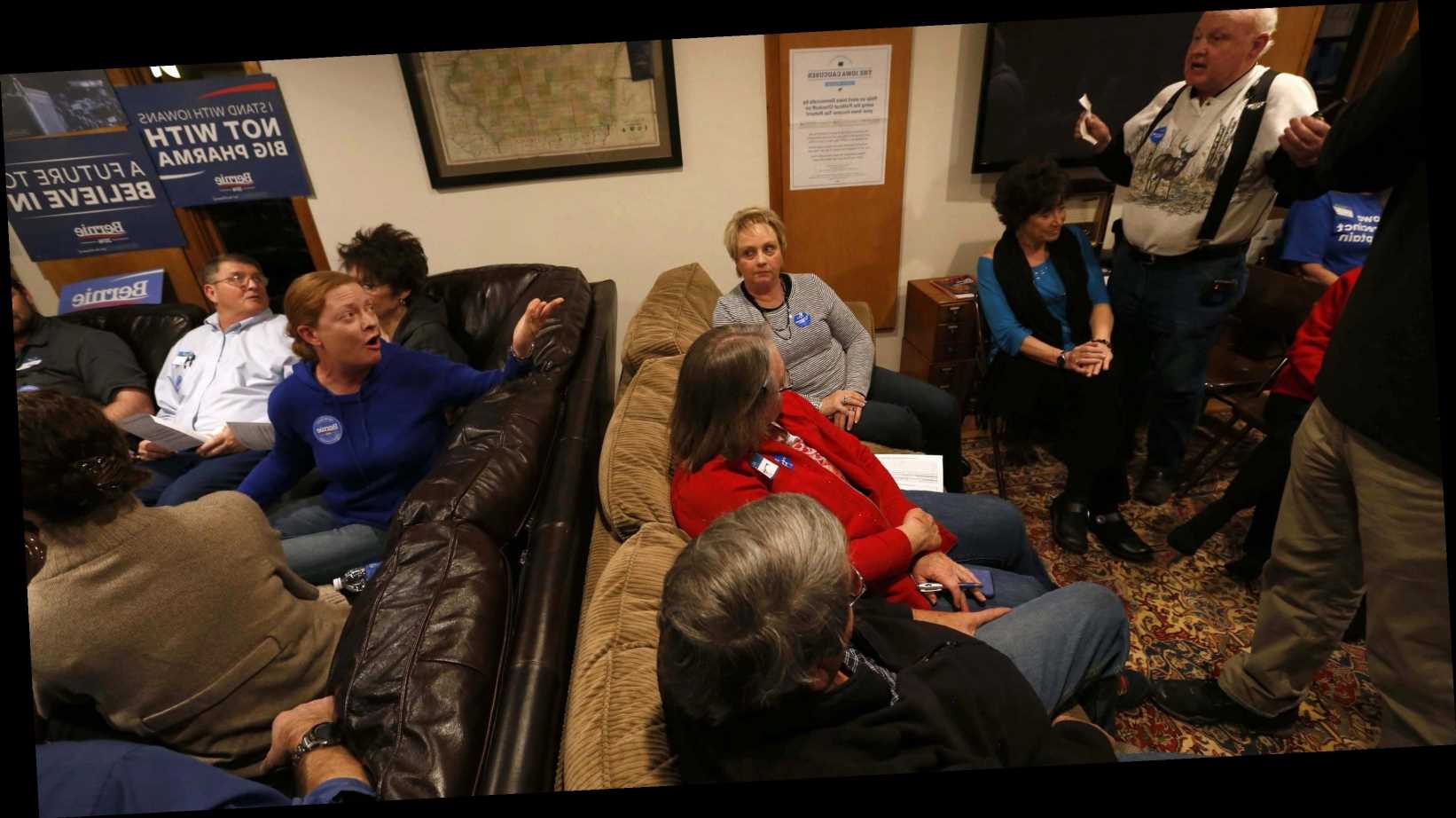DES MOINES, Iowa – Presidential candidates have spent millions of dollars and months of their lives chasing a win in Iowa’s caucuses, but new rules adopted this year open the possibility – some insiders call it a probability – that multiple candidates could “win.”
Democratic insiders and campaign staffers have long acknowledged the chaos and confusion that could emerge, fretting over what it could mean for this year’s caucus as well as future ones.
For decades, the winner of Iowa’s caucuses has been decided by a complicated system of state delegate equivalents, which operates kind of like the Electoral College. Unlike in the November presidential vote, though, Iowa’s tally of popular support was never released.
But on Monday night, the Iowa Democratic Party will publish two raw vote totals and the delegate numbers from caucus night.
So one candidate could win one or both of the delegate counts but lose the popular vote. That would open a new layer of complexity as media report the results, campaigns spin them and voters in later states try to make sense of them – all in a year when the stakes have never been higher for Iowa to show it deserves to remain the first-in-the-nation presidential voting state.
MORE: Why is Iowa first? A brief history of the state’s caucuses
Sean Bagniewski, chairman of the Polk County Democrats, said the procedure changes were part of negotiations and revisions in reaction to critiques of the 2016 Democratic caucuses. They’re designed to increase transparency and improve the process.
“But it’s a cruel irony that in some ways it can expose liabilities to the caucus as well,” he said.
Already, Iowa has faced outside threats from those who argue its leadoff position in the presidential nominating process is outdated, undemocratic and unrepresentative. And some Iowa Democrats worry that any hiccup on caucus night – such as a confusing story about who won – would add fuel to the fire.
Iowa Democratic Party Chairman Troy Price said he’s confident the new rules will offer a better explanation to the public of what happened on caucus night.
“I think what these numbers will do is just give greater transparency to the process, and people will have a better sense of what’s happening,” he said. “They’ll be able to see how people moved around and where support moved over the course of the evening. And I think that’s going to be valuable information as people head into the next round of early states and Super Tuesday.”
Caucuses are ‘messy by design’
Iowa’s Democratic caucuses are complicated affairs. They’re not run by the state, but by the state party and an army of unpaid volunteers.
“My goal, as I’ve joked, is to wake up on Feb. 4 saying, ‘Well, that could’ve gone worse,’” said Dubuque County Democrats Chairman Steve Drahozal. “Because the caucuses are messy by design.”
On Monday, tens of thousands of Democrats will simultaneously gather across the state in roughly 1,700 school gymnasiums, church basements and other caucus precinct sites at 7 p.m.
MORE: ‘Like trying to plan a wedding reception at 86 locations’: What it takes to prepare for the 2020 caucuses
At each site, Iowans will physically stand in a designated area of the room to show their support for their candidate. Someone will count each person in each group and tally the results. That first count is known as the “first alignment.”
Candidates need to amass support from at least 15% of those in attendance to be considered viable in the first alignment. If a candidate is not viable, their supporters can try to gain new support to become viable, or they can pick a different candidate to support.
Hillary Clinton supporter John Means, left, argues with Bernie Sanders supporter Carrie Kimrey over Sanders' electability Feb. 1, 2016, at a home caucus site in Rippey, Iowa. (Photo: Michael Zamora/The Register)
Then the groups’ sizes are counted again. That is known as the “final alignment.” While in past caucus years there have been multiple reshufflings, this year there will be only two – the first alignment and the final.
Each candidate is awarded delegates based on the final alignment results at each precinct. Those are reported back to the Iowa Democratic Party, which puts the precinct-level delegates into a formula that calculates the equivalent number of delegates each candidate would earn at the county convention, the district convention and then at the state convention.
The final number is reported in “state delegate equivalents.”
People counting other people takes time and can produce inconsistencies. The goal is always to control the chaos and to make sure people are able to participate and feel that the process was run fairly, Drahozal said.
“I’m expecting there to be confusion and a mess, because that’s what happens,” he said. “But I don’t want that confusion to be: ‘Hey, I thought I could just show up and cast a vote and then leave.’ … I don’t want anybody coming away from a Dubuque County caucus saying, ‘That was not fair, it was rigged’ in any way.”
Tight finish in 2016 spurs changes
In 2016, Hillary Clinton won the Iowa Democratic caucuses, earning 49.9% of state delegate equivalents and edging out Bernie Sanders, who earned 49.6% of state delegate equivalents.
The narrow result prompted outcries from Sanders’ campaign and supporters, who worried small errors could have changed the outcome, and they urged the Iowa Democratic Party to reconsider the results.
Democratic National Committee member Scott Brennan, of Iowa, left, speaks with Jan Bauer, an Iowan on the DNC's Unity Reform Commission. The commission is recommending changes to Iowa's first in the nation caucus process. (Photo: Jason Noble/The Register)
And lurking in that razor-thin margin was always the possibility that more people had turned out to support Sanders even though Clinton won more delegate equivalents. The state party did not collect or report the raw numbers behind the final delegate calculation that would have provided an answer.
That will change for Monday’s caucuses.
This cycle, the party will release the number of people who supported each candidate on the first alignment and again after the realignment.
“Almost always there have been campaigns that have said: ‘Look, if this were a primary, I would have won. I had the most people. I just didn’t win the delegates, and that’s a silly system,’” said Norm Sterzenbach, a longtime Iowa Democratic operative who worked as Beto O’Rourke’s state director at the time he was interviewed and now advises U.S. Sen. Amy Klobuchar’s Iowa campaign on its caucus strategy. “But that argument doesn’t go anywhere because there’s not really any data – there’s certainly no independent data – to suggest that. … Now, it’s going to be right from the Democratic Party, right there for anyone to analyze and see.”
But having the data probably won’t end the jockeying.
“I think candidates will spin whatever narrative they want to coming out of caucus night,” Price said. “Our job is just to make sure that the data is accurate – that it accurately reflects what happened on caucus night. And that’s what we’re going to stay focused on.”
Then there’s the momentum winner
Iowa has 41 pledged delegates it sends to the national convention, and those are divvied out to candidates proportionally to their caucus night results. The candidate who earns the most delegates officially wins the Iowa caucuses.
But the caucuses have never just been about who actually gets the most delegates – Iowa has too few of those to matter much compared with larger states like Texas, which has 228 delegates, or California, with 416. The real winner in Iowa has always been the candidate who captures the media narrative and claims momentum going into the rest of the primary race.
In 2020, candidates will have more ways than ever to claim victory.
The candidate who wins the delegate count, for example, will likely be able to argue they out-organized their competitors. Iowa’s Electoral College-style delegate system rewards those with a grassroots operation that can reach supporters across the state in rural and urban areas.
But the candidate who wins the most support in the first alignment could say they would have won the night had Iowa held a simple primary contest. That’s a direct measurement of how Iowans felt when they walked into the caucus.
And the person who tallies the most supporters in the final alignment could make the case they can create the broadest coalition. Being able to attract supporters beyond one’s own base is valuable in a general election.
It’s possible the same candidate could win all three measures of support. That would create the simplest narrative out of Iowa.
But it’s also fully possible that a different candidate could “win” each of the three metrics.
Anticipating what the new results might mean for a narrative, some campaigns could be campaigning strategically to try to inflate one metric over the other.
Until now, there has never been a benefit to campaigning only in the densely Democratic Iowa City, for example, because the delegates there are capped. But a candidate this cycle might choose to run up the score there and in other Democratic strongholds to try to inflate their raw support numbers on the first and second alignments.
The availability of the new menu of results could benefit candidates by giving them more ammunition to argue they’ve won or overperformed expectations. But Sterzenbach said it could also make it harder for a candidate to claim momentum if others are making the same case.
“If you’re banking on a momentum strategy like, ‘I’m going to do really well in Iowa and it’s going to springboard me to fundraising nationally’ … you need a clean result,” he said. “Only winning one of those is not clean. You’ve got somebody else who’s got this momentum story they can tell.”
Source: Read Full Article


